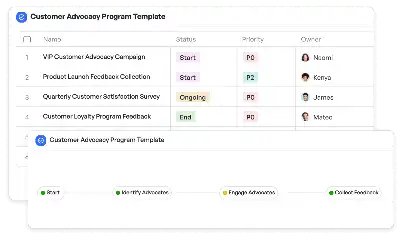Manufacturing Non-Destructive Testing Protocol
Achieve project success with the Manufacturing Non-Destructive Testing Protocol today!

What is Manufacturing Non-Destructive Testing Protocol?
Manufacturing Non-Destructive Testing Protocol (NDT) refers to a systematic approach used in the manufacturing industry to evaluate the properties of a material, component, or system without causing damage. This protocol is critical in ensuring the safety, reliability, and integrity of products, especially in industries like aerospace, automotive, and construction. By employing techniques such as ultrasonic testing, radiographic testing, and magnetic particle inspection, manufacturers can detect flaws or defects early in the production process. For instance, in the aerospace industry, NDT protocols are used to inspect aircraft components for cracks or weaknesses that could compromise safety. The importance of NDT lies in its ability to maintain product quality while minimizing waste and ensuring compliance with industry standards.
Try this template now
Who is this Manufacturing Non-Destructive Testing Protocol Template for?
This template is designed for professionals and teams involved in quality assurance, manufacturing, and safety compliance. Key users include quality control engineers, manufacturing supervisors, safety inspectors, and project managers. For example, a quality control engineer in the automotive industry can use this template to document and standardize the testing of car components for structural integrity. Similarly, a safety inspector in the construction industry can rely on this protocol to ensure that building materials meet safety standards before use. The template is also valuable for training new team members, providing them with a clear and standardized approach to non-destructive testing.

Try this template now
Why use this Manufacturing Non-Destructive Testing Protocol?
The Manufacturing Non-Destructive Testing Protocol addresses specific challenges in the manufacturing process, such as the risk of undetected defects, inconsistent testing methods, and compliance with stringent industry standards. For instance, in the production of high-pressure pipelines, undetected flaws can lead to catastrophic failures. This template provides a structured approach to identify and document potential issues, ensuring that all components meet safety and quality requirements. Additionally, it helps standardize testing procedures across teams, reducing variability and improving reliability. By using this protocol, organizations can enhance product safety, reduce material waste, and maintain compliance with regulatory standards, ultimately protecting both their reputation and bottom line.

Try this template now
Get Started with the Manufacturing Non-Destructive Testing Protocol
Follow these simple steps to get started with Meegle templates:
1. Click 'Get this Free Template Now' to sign up for Meegle.
2. After signing up, you will be redirected to the Manufacturing Non-Destructive Testing Protocol. Click 'Use this Template' to create a version of this template in your workspace.
3. Customize the workflow and fields of the template to suit your specific needs.
4. Start using the template and experience the full potential of Meegle!
Try this template now
Free forever for teams up to 20!
The world’s #1 visualized project management tool
Powered by the next gen visual workflow engine




